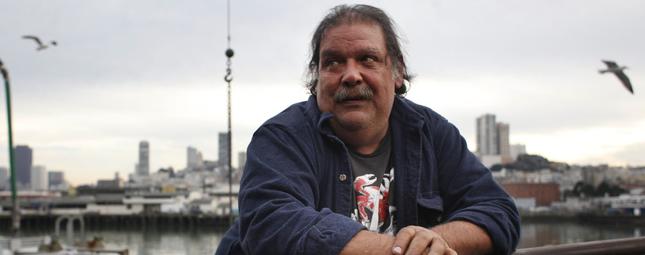Pacific coast forage fish protection strongest in the world (Opinion)
SEAFOOD.COM NEWS [Seafoodnews.com] By D.B. Pleschner – March 20, 2013 – (Opinion)
(D.B. Pleschner is Executive Director of the California Wetfish Producers Association, a nonprofit designed to
promote sustainable wetfish resources.)
Recent stories, in newspapers, and reported on Seafood News, (Pacific Fishery Management Council proposes comprehensive ecosystem plan Seafood.com Feb 20th) unfortunately may have left some readers with the wrong impression regarding the Pacific Fishery Management Council’s upcoming decision – on April 9 – to adopt the Pacific Coast Fishery Ecosystem Plan (FEP).
These stories have implied rampant overfishing of forage species – like sardines – that the FEP supposedly will address by reducing catch limits on these fish in order to maintain a food source for bigger species like salmon and albacore.
However, this simply isn’t true.
The Council authorized development of the FEP to “enhance the Council’s species-specific management programs with more ecosystem science, broader ecosystem considerations and management policies that coordinate Council management across its Fishery Management Plans (FMPs) and the California Current Ecosystem (CCE).”
The FEP’s first initiative proposes to protect unmanaged lower trophic level forage species such as Pacific sandlance and saury, which are currently not fished, by “prohibiting the development of new directed fisheries on forage species that are not currently managed by the Council, or the States, until the Council has had an adequate opportunity to assess the science relating to any proposed fishery and any potential impacts to our existing fisheries and communities.”
In contrast, anchovy, sardines and market squid, officially known as coastal pelagic species (CPS), are already well managed under both federal and state fishery management plans, which prescribe precautionary harvest limits. Consider the visionary management of Pacific sardines, the poster fish for ecosystem-based management. A riskaverse formula is in place that ensures when population numbers go down, the harvest also goes down. Conversely, when more sardines are available, more harvest is allowed, but the maximum cap is set far below the
maximum sustainable harvest level.
In 2011, the U.S. West Coast sardine fisheries harvested only 5.11 percent of a very conservative stock estimate, leaving nearly 95 percent of the species for predators and ecosystem needs. Does that sound like overfishing to you? Of course not, and scientists agree.
A 2012 study by a panel of 13 scientists from around the world – known as the Lenfest Forage Fish Task Force – concluded that while overfishing of forage species is problematic on a global scale, the West Coast is not being overfished.
Indeed they noted that the Pacific Coast is, “ahead of other parts of the world in how it manages some forage fish.” The region has “stricter monitoring and more conservative limits that could serve as a buffer against future crashes.”
Knowledgeable people know that this is no accident. Fishing families have historically worked with regulators to protect our wetfish fisheries. In fact, more than a decade ago, the Pacific Fishery Management Council adopted a management strategy for CPS harvested in California and on the West Coast, maintaining at least 75 percent of the fish in the ocean to ensure a
resilient core biomass. The sardine protection rate is even higher.
California also implemented a network of no-take marine reserves throughout our state’s waters. Reserves established at specific bird rookery and marine mammal haul-out sites – for example near the Farallon Islands, Año Nuevo, and Southern California’s Channel Islands – were enacted to protect forage fish. More than 30 percent of traditional squid harvest grounds are now closed in reserve.
Hopefully these facts will prevail and dispel the hype. California has been recognized by internationally respected scientists as having one of the lowest fishery harvest rates in the world. It’s one of only a few areas deemed ‘sustainable’. (Rebuilding Global Fisheries, Science 2009).
Ken Coons
Seafood.com News 1-781-861-1441
Email comments to kencoons@seafood.com
Copyright © 2013 Seafoodnews.com
Source: Seafood.com News




